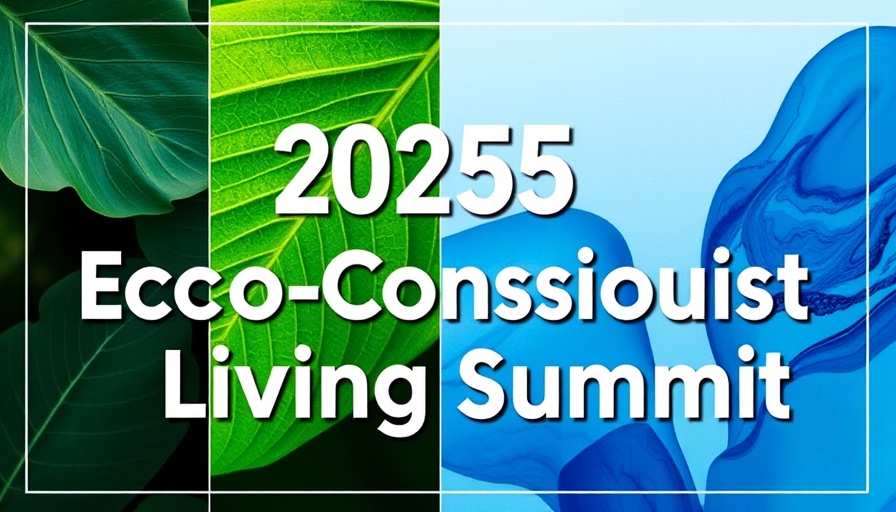
Revitalizing our Planet: Highlights from the 2025 Eco-Conscious Living Summit
On April 23, 2025, the 4th annual Eco-Conscious Living Summit convened visionary thinkers, thought leaders, and innovators from various fields, united by a common goal: to redefine sustainable living and explore innovative solutions to protect our planet. Organized by Hearst Magazines, the summit showcased groundbreaking ideas that inspire individuals and communities to engage more deeply with sustainable practices.
The Power of Mindful Consumption
In the opening session, “Sustainability with Integrity: Redefining Standards for a Greener Future”, panelists including Jocelyn Lyle from the Environmental Working Group emphasized the urgency of changing personal buying habits. By prioritizing eco-friendly products and making informed decisions, consumers can drive demand for sustainable practices across industries. Engaging with brands that are transparent about their sustainability efforts is not just a trend; it is imperative for fostering a healthier planet.
Food for Thought: Culinary Innovations for a Better Tomorrow
Celebrity chef José Andrés took center stage in the session titled “Change the Recipe: Feeding Hope Through Innovation and Compassion”. His focus on how food connects communities was enlightening, particularly as he aims to revolutionize food accessibility. By encouraging chefs and home cooks alike to embrace sustainable practices, Andrés advocates for compassion in the culinary arts, ensuring that innovative cooking can contribute to societal change.
Lessons from Nature: Conscious Fragrance Production
Another compelling discussion led by Lindsey Kneuven explored the distinctive partnership between fragrance and sustainability in “The Future of Fragrance: Indigenous Wisdom and Streamlining Last-Mile Supply Chains”. Kneuven’s collaboration with the Martu tribe demonstrates the power of respecting indigenous practices while maintaining modern efficiency. Such partnerships not only enhance product quality but also ensure that native cultures are preserved and celebrated.
Making Comfort Sustainable
The session on “Products With Purpose: Redefining Home Comfort Through Sustainable Innovation” tackled the need for resilience in the face of climate challenges. Experts discussed advancements in home products that reduce energy consumption, improve indoor air quality, and utilize sustainable materials, showcasing the importance of practical solutions that consumers can apply in their own homes.
Flavors of the Future: The New Age of Vegetables
Chef Dan Barber captivated attendees with his passion for vegetables in “Flavor First: Seeds, Chefs and the Quest for Deliciousness”. He deliberated on how taste and sustainability intersect, highlighting his quest to produce flavorful crops through innovative seed breeding. Barber’s journey is a testament to how culinary excellence and sustainability can go hand in hand.
The Intersection of Art and Environmentalism
In a captivating conversation about theater and ecology, Idina Menzel addressed the potential role of the arts in raising awareness and prompting action in “Rooted in Theatre: Can Broadway Save the Trees?”. Her insights into integrating environmental themes in productions remind us that storytelling can inspire change and galvanize communities to prioritize our planet.
Building Resilience in Our Homes
Amid rising climate challenges, interior designer Mikel Welch discussed the need for homes that are not only beautiful but also resilient against environmental threats in “The Forever Home: Rebuilding for the Future”. A focus on utilizing fire-resistant materials and sustainable building practices stands as a model for homeowners looking to construct or renovate with the future in mind.
Conclusion: Take Action for a Greener Tomorrow
The Eco-Conscious Living Summit encapsulates a pivotal moment for those invested in the future of our planet. By engaging in these conversations and applying the lessons learned, we can all be a part of the movement toward sustainability. From mindful consumption to innovative building practices, there are countless actions each of us can take to contribute to a greener future. Let's continue these dialogues in our communities and take actionable steps that reflect our commitment to sustainable living.
 Add Row
Add Row  Add
Add 




Write A Comment